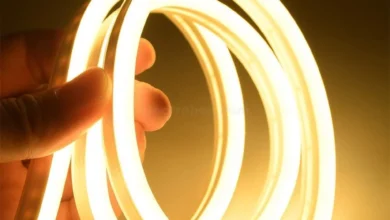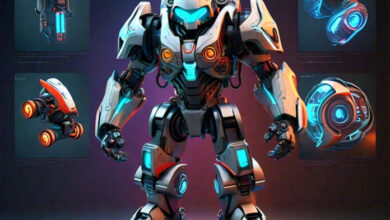Google Images: Huckleberry Finn Illustrations Featuring Corncob Pipes

The illustrations of Huckleberry Finn, especially those featuring the iconic corncob pipe, are a fascinating window into the artistic interpretations of one of Mark Twain’s most famous characters. Twain’s 1884 novel, The Adventures of Huckleberry Finn, has been depicted by numerous illustrators over the decades. Their works add nuance and visual depth to the mischievous, free-spirited Huck Finn and the adventures he embarks upon with Jim along the Mississippi River. One particularly symbolic visual element found in these depictions is the corncob pipe, which often becomes associated with rustic Americana and Huck’s laid-back nature.
This article dives deep into the iconography of Huckleberry Finn illustrations, examining their presence on Google Images, the role of the corncob pipe in these artworks, and the historical significance tied to these images.
Huckleberry Finn and the Role of Corncob Pipes in Visual Interpretations
The corncob pipe has become a visual shorthand in many illustrations of Huckleberry Finn, evoking imagery of carefree, rural life. While Huck’s depiction in the novel emphasizes his ragged clothes, straw hat, and barefoot appearance, artists have taken the liberty of incorporating the corncob pipe as a symbol of Huck’s connection to the rough and simple ways of the American frontier.
Though Huck is a child and not explicitly described smoking a pipe in the text, many illustrations show him holding or puffing on a corncob pipe. These artistic liberties are likely influenced by the broader American tradition of associating such pipes with backwoods characters, wanderers, and carefree spirits. The corncob pipe complements Huck’s rebellious nature, emphasizing his rejection of societal norms and alignment with the rough-and-tumble lifestyle along the river.
Exploring Google Images for Huckleberry Finn Illustrations with Corncob Pipes
A Google Images search for Huckleberry Finn illustrations reveals a wealth of artistic styles, each presenting a unique take on the character. From vintage, black-and-white etchings to more modern, colorized interpretations, the images capture both the spirit of the original text and the artist’s personal vision. Several patterns emerge when browsing these illustrations:
- Classic Etchings and Engravings
- Early editions of The Adventures of Huckleberry Finn featured illustrations by artists like E.W. Kemble, who created some of the most iconic images of Huck and Jim. These early images present Huck in rustic clothing, sometimes with a pipe in hand, highlighting his wild, free-spirited nature.
- Cartoonish Interpretations for Younger Audiences
- Modern children’s editions tend to present Huck with a more playful appearance, often toning down or omitting the pipe entirely. However, in certain nostalgic or traditional renderings aimed at older audiences, the corncob pipe reappears, reinforcing Huck’s portrayal as a character who embodies rural American values.
- Art for Collectors and Poster Prints
- Many art prints and posters found in Google Image searches feature detailed and stylized versions of Huck Finn. In these collectible images, artists use the corncob pipe to convey an old-time charm that resonates with fans of both Twain’s novel and American folklore.
Symbolism of the Corncob Pipe in American Culture and Huck Finn’s Depictions
The corncob pipe is not just an artistic embellishment; it carries deep cultural symbolism. Its use in illustrations of Huckleberry Finn reflects larger themes tied to the novel’s setting and characters:
- Representation of Rural Simplicity
Corncob pipes have long been associated with farmers, woodsmen, and wanderers who live off the land. By placing a corncob pipe in Huck’s hands, artists emphasize his humble origins and his detachment from the civilized world. - Freedom and Rebellion
Huck Finn’s journey down the Mississippi is a story of personal freedom and resistance to societal constraints. The addition of the pipe in his imagery highlights this rebellious streak, reinforcing the idea that Huck follows his own rules, even if they go against the expectations of polite society. - Nostalgia for a Bygone Era
Illustrations featuring Huck with a corncob pipe tap into American nostalgia for a simpler time. These images evoke a sense of freedom, adventure, and connection to nature—qualities that appeal to both readers and artists who reimagine Huck’s story in visual form.
How Artists Have Evolved Huck Finn’s Image Over Time
The portrayal of Huck Finn has evolved significantly over time, influenced by changing cultural attitudes and artistic trends. Early illustrations depicted Huck in ways that were consistent with 19th-century perceptions of rural children. However, in later decades, artists began to reimagine him through different lenses:
- Early 20th Century Interpretations
In the first half of the 20th century, Huck Finn was often depicted in realistic and naturalistic styles, with the corncob pipe symbolizing his rugged, independent spirit. These illustrations aligned with the era’s fascination with rural Americana and the idealization of frontier life. - Mid-20th Century Cartoons and Comic Styles
As children’s entertainment evolved, the tone of Huckleberry Finn’s imagery became more light-hearted and cartoonish. While many versions targeted at younger audiences omitted the pipe to align with more modern sensibilities, some nostalgic editions still included it, especially in adult-oriented prints. - Contemporary Art and Reinterpretations
In recent years, illustrators have embraced diverse artistic styles to depict Huck Finn, from minimalist renderings to hyper-detailed artistic prints. While modern depictions often omit the corncob pipe to reflect changing social norms around smoking, some artists still include it as a nod to Huck’s historical portrayals.
The Influence of Huckleberry Finn Illustrations on American Visual Culture
The visual representations of Huck Finn, especially those found on Google Images, have become an essential part of American cultural iconography. These illustrations are not just artistic interpretations; they reflect deeper themes tied to Twain’s narrative—freedom, rebellion, and the spirit of adventure. The inclusion of the corncob pipe in some of these depictions underscores the tension between Huck’s childlike innocence and the adult world’s complexities.
The availability of these images online allows readers, students, and art enthusiasts to explore how artists across generations have interpreted Huck’s character. Additionally, Google Images serves as a valuable archive, offering insights into the cultural evolution of Twain’s most famous creation.
Conclusion
Exploring Huckleberry Finn illustrations through Google Images reveals the many ways in which artists have interpreted Twain’s character. The presence of the corncob pipe in these depictions is more than a stylistic choice—it serves as a visual cue that enhances our understanding of Huck’s personality and the themes of the novel. From early black-and-white etchings to colorful contemporary prints, these artworks capture the enduring appeal of Huck Finn’s story and the rustic charm of the American South.





